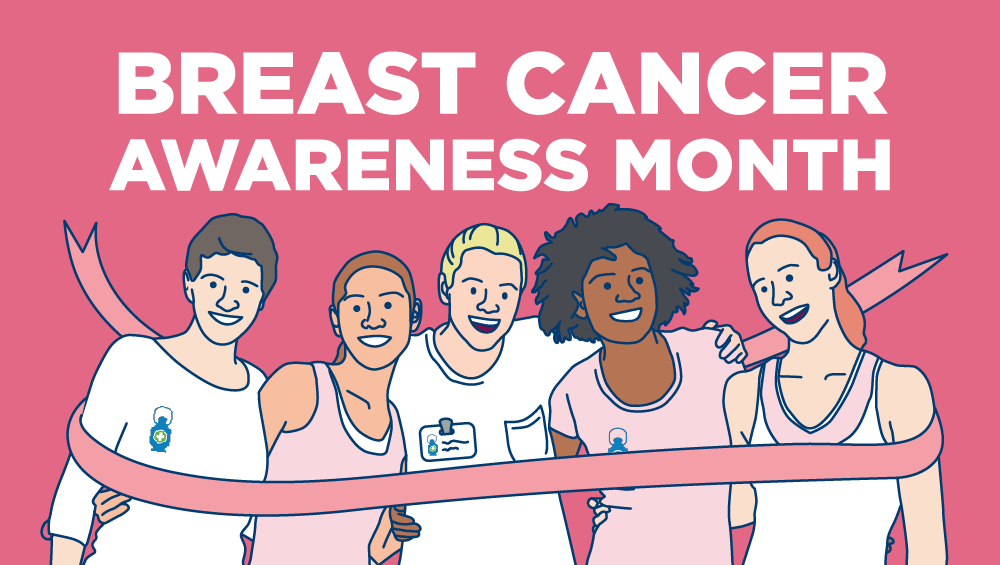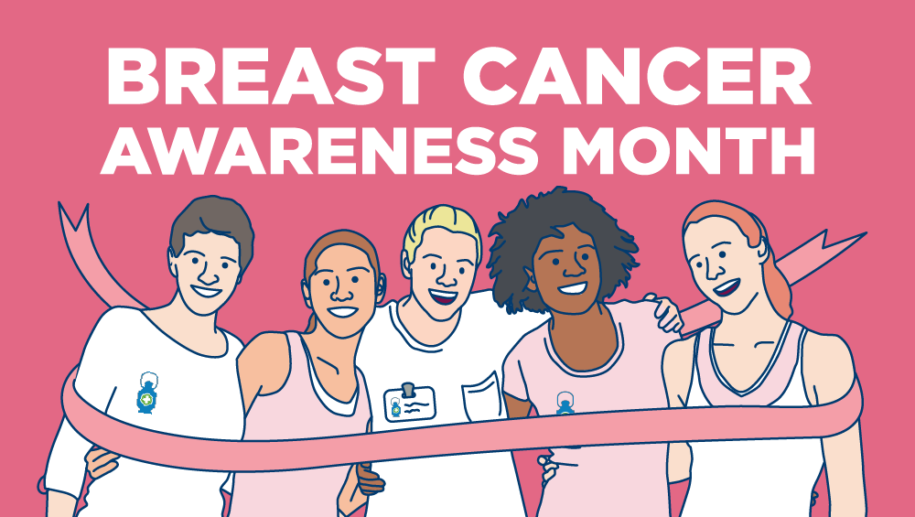
Get Screened and Spread the Word: October is Breast Cancer Awareness Month
Breast cancer is a widespread and heartbreaking medical issue that affects individuals, families, and healthcare teams across the globe. In 2023 alone, nearly 300,000 American women will be diagnosed with the disease and forced to seek care [1].
With diagnosis, however, comes the potential for treatment and recovery. Early detection can be critical to successful medical intervention, so getting screened should be part of your healthcare routine.
October is Breast Cancer Awareness Month, so we’re encouraging people to get checked and spread the word to their friends and family. In this blog, we’ll share some early signs to look out for, contemporary screening practices, and an uplifting patient success story from a recent breast cancer survivor.
Who Should Be Screened For Breast Cancer?
Breast cancer can affect anyone regardless of gender, medical history, or other factors. Nonetheless, it’s far more prevalent in women than men, who make up around 99% of diagnosed cases [2].
Furthermore, age and genetics also play a large role in determining someone’s predisposition for breast cancer. Older women and those with a familial history of breast or ovarian cancer are at a greater risk than others [3].
Women of all ages can do home self-exams by feeling their breasts for abnormal pain, swelling, and lumps—the most outward signs of potential problems. Higher-risk groups, however, should receive more thorough testing. Thus, the Centers for Disease Control and Prevention (CDC) offers the following guidelines for getting mammograms, the most common form of medical breast cancer screening [4]:
- Women aged 50 to 74 should get checked once every two years
- Women aged 40 to 49 should consult a healthcare professional and collectively decide if a mammogram is necessary
- Younger people should seek out mammograms at their doctor’s recommendation
Importantly, it’s key to consult a medical professional before seeking out any sort of cancer screening—mammogram or otherwise. Recently, however, some patients and healthcare systems have been relying on Artificial Intelligence (AI) to assess potential cases of cancer and other diseases.
The Role of AI in Breast Cancer Awareness and Diagnoses
Since the early days of WebMD and other such sites, people have been turning to the Internet to help them understand their medical issues. In recent times, however, the rise of ChatGPT has led to both excitement and concern over the use of AI to diagnose cancer and other conditions.
On one hand, AI is instantly accessible, cost-effective, and potentially less anxiety-inducing than a human professional. Additionally, there have been some promising advancements in testing such technologies for diagnosis purposes. ChatGPT4, for instance, was capable of assessing the correct type of radiological imaging necessary for patients with breast pain with up to 98.4% accuracy [5].
On the other hand, the World Health Organization (WHO) warns against the rapid adoption of AI technologies for healthcare purposes. ChatGPT and other language models are still unproven in the field, and relying on them without proper testing could result in [6]:
- Errors by healthcare workers
- Harm to patients
- Eroded trust in AI as a whole
- Limited adoption of such technologies when they’re actually ready for use in healthcare settings
While AI might be prevalent in cancer screening and treatment in the future, for now, it’s more so a tool to encourage women to get tested and spread awareness. There’s simply no replacing the human connection of a healthcare professional who can help advise and guide patients dealing with difficult conditions such as cancer.
Sarah’s Story: How Screening Saved Her Patient’s Life
Sarah is a Chronic Care Management (CCM) nurse at Signallamp Health. Her job is to oversee the wellbeing of her patients, schedule their tests and treatments and communicate with providers to ensure their ongoing health.
Sarah noticed that one of her patients, Lilith, was overdue for a mammogram. So, Sarah scheduled her one at the earliest possible opportunity. After the screening, however, Sarah learned something that no healthcare professional wants to hear: Lilith had breast cancer and would need to be operated on as soon as possible.
Thankfully, due to catching it early and acting fast, the surgery was a success, and Lilith’s cancer was treated before it could worsen. Sarah feels privileged to have been by Lilith’s side through every step of her journey and is relieved she was able to get Lilith the care she needed.
The Signallamp Solution: Combining Modern Technology and Human Touch to Provide Optimal Care
Technology is astounding. From mammograms to MRIs, cancer treatment technology, in particular, has advanced immensely over the years and helped countless patients deal with their conditions.
Similarly, Signallamp Health embraces evolving technology in our care practices. At Signallamp, we focus on Remote Patient Monitoring (RPM), a form of CCM where patients collect health data and share it with a designated healthcare professional. Modern technology, such as at-home medical tests and video conferencing, make RPM easier, and we aim to continually integrate such fruitful advancements into our practices in ways that benefit our patients.
While there’s no at-home analog for mammograms yet, our CCM nurses will schedule your screening and explain your results, providing an emotional, entirely human touch to healthcare that AI language models simply can’t replicate—no matter their level of complexity.
This Breast Cancer Awareness Month, reach out to Signallamp to enquire about coverage for your healthcare needs. From annual mammograms to designated nurses, our care plans provide the resources women need to live healthy, fulfilled lives.
###
Sources:
[1] “Cancer Stat Facts: Female Breast Cancer.” National Cancer Institute. [Online] Available: https://seer.cancer.gov/. [Accessed October 15, 2023]
[2] “Breast Cancer in Men.” Centers for Disease Control and Prevention. July 25, 2023. [Online] Available: https://www.cdc.gov/. [Accessed October 15, 2023]
[3] “What Are the Risk Factors for Breast Cancer?.” Centers for Disease Control and Prevention. July 25, 2023. [Online] Available: https://www.cdc.gov/. [Accessed October 15, 2023]
[4] “What Is Breast Cancer Screening?.” Centers for Disease Control and Prevention. July 25, 2023. [Online] Available: https://www.cdc.gov/. [Accessed October 15, 2023]
[5] “Evaluating GPT as an Adjunct for Radiologic Decision Making: GPT-4 Versus GPT-3.5 in a Breast Imaging Pilot.” Journal of the American College of Radiology. June 21, 2023. [Online] Available: https://www.jacr.org/. [Accessed October 15, 2023]
[6] “WHO raises concerns over potential data biases in AI health tools.” Healthcare Brew. May 31, 2023. [Online] Available: https://www.healthcare-brew.com/. [Accessed October 15, 2023]

